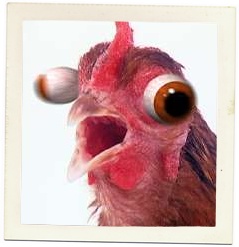Researchers at the University of Georgia, Athens, have identified a strong link between the prevalence and load of certain foodborne pathogens on poultry farms, and later downstream at the processing plant. They report their findings in a manuscript published ahead of print in the journal Applied and Environmental Microbiology.
“This study suggests that reducing foodborne pathogen loads on broiler chicken farms would help to reduce pathogen loads at processing, and 
may ultimately help to reduce the risk of foodborne illness,” says Roy Berghaus, an author on the study. “This is important because most of our efforts towards reducing foodborne pathogens are currently focused on what happens during processing. Processing interventions are effective but they can only do so much.”
The team suggests that fewer pathogens on the farm would reduce contamination levels at the processing plant, and notes that “vaccination of breeder hens, competitive exclusion products and the use of acidified water during feed withdrawal” have all reduced Salmonella in commercial broiler flocks. However “reliable approaches to reduce Campylobacter colonization are currently unavailable,” although post-processing freezing has reduced Campylobacter loads on carcasses.
A copy of the manuscript can be found online at http://bit.ly/asmtip0513a. The paper is scheduled to be formally published in the June 2013 issue of Applied and Environmental Microbiology.
(R.D. Berghaus, S.G. Thayer, B.F. Law, R.M. Mild, C.L. Hofacre, and R.S. Singer, 2013. Enumeration of Salmonella and Campylobacter spp. in  environmental farm samples and processing plant carcass rinses from commercial broiler chicken flocks. Appl. Environ. Microbiol. published ahead of print 26 April 2013 ,doi:10.1128/AEM.00836-13.)
environmental farm samples and processing plant carcass rinses from commercial broiler chicken flocks. Appl. Environ. Microbiol. published ahead of print 26 April 2013 ,doi:10.1128/AEM.00836-13.)
